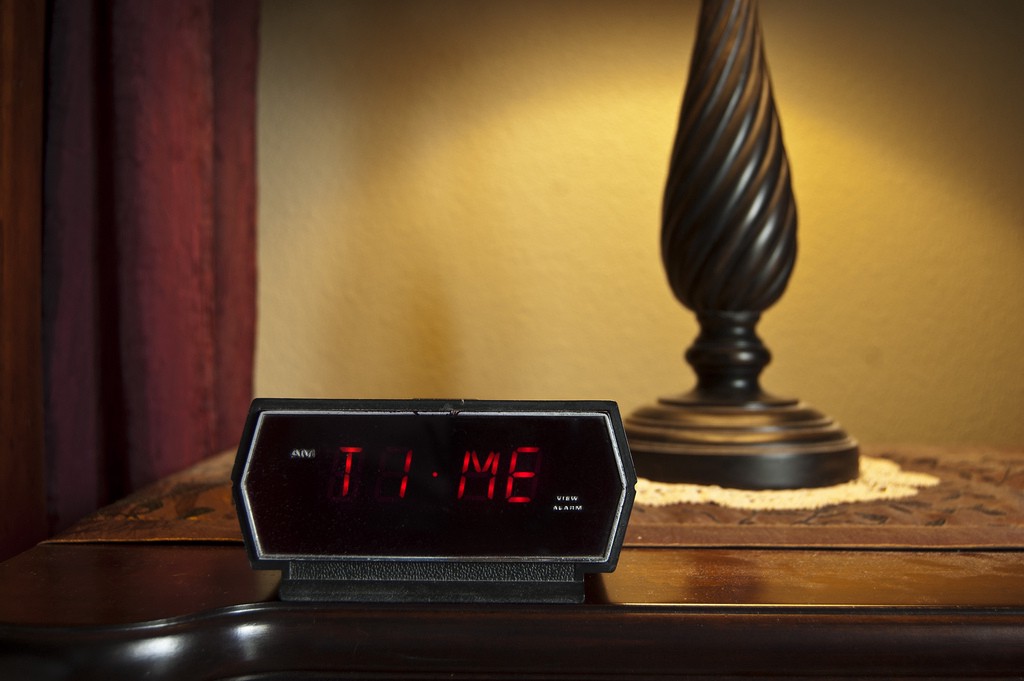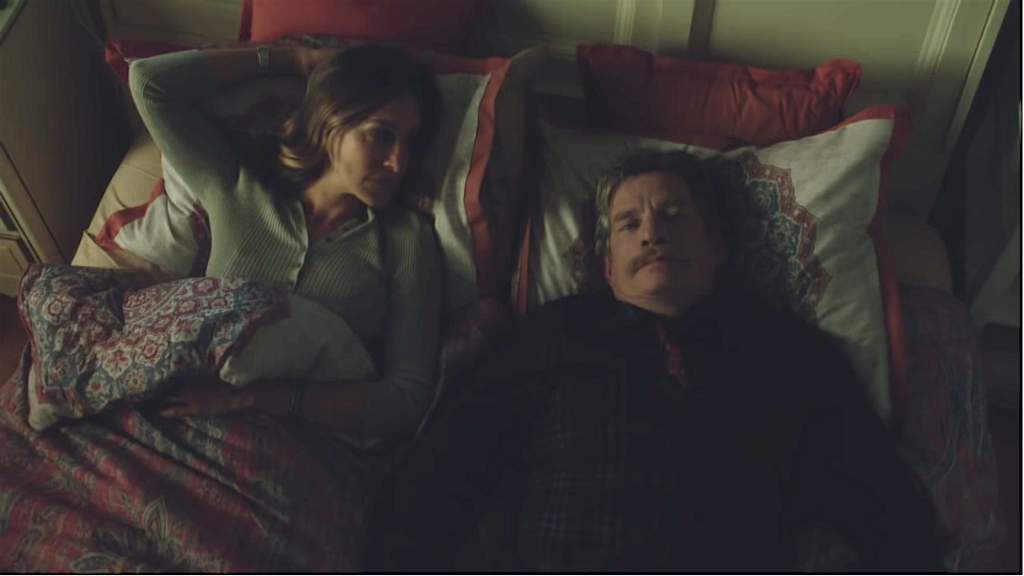New York City, October 13, 2016

★★ A baby lay in a full quilted cold suit in its carriage in the elevator, but the outdoors was humid and already something approaching mild, in the still low but sparkling light. A tiny dog hunched along in a tiny coat. The north and west went gray, and a thin uneven rain fell on the early afternoon. The grocery store was blasting hot air in front of the exit. Little drops beaded on the cars and on the face of the phone. Having lasted just long enough to count, the shower faded away. The clouds broke and amber reflections bounced around the buildings, while the remains of the overcast in the east turned mauve. One last sheet of cloud was in the west, to catch pink light on its edge and on its ruffled underside.
Brain Strain
Young people, Adderall, and sleep

In 2009, The New Yorker published an article by Margaret Talbot about “neuroenhancers”—supposedly brain-enhancing drugs like Ritalin, Adderall, and Provigil, which are known to many millennials as stimulants you ingest to keep you awake long enough to finish writing a paper. Some people actually need modafinil (the generic name for the wakefulness drug) because they are narcoleptic and literally cannot stay awake and do life properly. But for those of us who are largely normal, amphetamines feel dangerously like some kind of super-powered version of coffee, and they might make you wonder—have I been half-asleep this whole time? Is there a higher level of wakefulness that I can unlock that feels oddly like hyperconsciousness? Are there hours of the day I haven’t been using productively?
Who among us has not wished for more time? The allure of the neuroenhancer (the Gibsonian portmanteau cannot be coincidence) is vast and extremely common. The New Yorker piece included anecdotes from a recent Harvard College graduate, pseudonymized as Alex:
He was ingratiating and articulate, and smoked cigarettes with an ironic air of defiance. Alex was happy enough to talk about his frequent use of Adderall at Harvard, but he didn’t want to see his name in print; he’s involved with an Internet start-up, and worried that potential investors might disapprove of his habit.
This week, the New York Times Magazine published a very good first-person essay by Casey Schwartz (author of a new neuroscience book, In The Mind Fields, and the daughter of the most divisive voice on New York radio) about the experience of basically what happens AFTER you’re Alex—reckoning with an addiction, coming down off the drug, and asking yourself what it was doing for you, if anything.
The confessional-as-diving-board genre is a tricky one to pull off but Schwartz does it gracefully, lucidly, and humbly. Schwartz must have been a feverishly productive student in the first place—she attended Brown University, University College London, and worked in the Yale neuroscience lab—but on Adderall she felt superhuman.
Adderall wiped away the question of willpower. Now I could study all night, then run 10 miles, then breeze through that week’s New Yorker, all without pausing to consider whether I might prefer to chat with classmates or go to the movies. It was fantastic. I lost weight. That was nice, too. Though I did snap at friends, abruptly accessing huge depths of fury I wouldn’t have thought I possessed. When a roommate went home one weekend and forgot to turn off her alarm clock so that it beeped behind her locked door for 48 hours, I entirely lost control, calling her in New York to berate her. I didn’t know how long it had been since I’d slept more than five hours. Why bother?
The Times magazine piece is a good bookend to Talbot’s 2009 article. Casey is Alex seven years later: another incredibly high-functioning and self-aware Ivy League kid who snagged a prescription for Adderall by parroting back symptoms of A.D.H.D. One of the most worrisome things about what Schwartz calls “Generation Adderall” is that we don’t yet fully understand the long-term effects of moderate to heavy use of these drugs. What if all those hours of sleep you missed were crucial to helping you form a certain kinds of memories? And did the short-term gains in cognitive enhancement of a very limited kind really have any overall effect on these overachievers’ lives?
Both pieces conclude that Adderall helped a certain kind of young person deal with my generation’s vague endemic of existential and intellectual FOMO. The best thing that seems to have happened to them is giving themselves most of the ultimate credit for the work and tasks they completed on the drug. It’s an alluring concept, that a little blue pill could give you the gift of time, but it turns out that time is warped in its own way. As Alex told Talbot:
“It only works as a cognitive enhancer insofar as you are dedicated to accomplishing the task at hand,” he said. “The number of times I’ve taken Adderall late at night and decided that, rather than starting my paper, hey, I’ll organize my entire music library! I’ve seen people obsessively cleaning their rooms on it.” Alex thought that generally the drug helped him to bear down on his work, but it also tended to produce writing with a characteristic flaw. “Often, I’ve looked back at papers I’ve written on Adderall, and they’re verbose. They’re belaboring a point, trying to create this airtight argument, when if you just got to your point in a more direct manner it would be stronger. But with Adderall I’d produce two pages on something that could be said in a couple of sentences.” Nevertheless, his Adderall-assisted papers usually earned him at least a B. They got the job done. As Alex put it, “Productivity is a good thing.”
I wonder where Alex is now, and what he makes of his blue-pill days. It’s heartening to believe that Generation Adderall can grow up, if only because they just got so tired. Indeed, the symptoms of sleep deprivation and A.D.H.D. are often one and the same.
Attention Problems May Be Sleep-Related
It is my very uninformed and anecdotal opinion that sleep is one of the greatest gifts a parent can give a child, after food, shelter, and adorable clothing. It’s still an enormous mystery, but we’ve known forever that sleep is necessary and vital. Sleep-deprived lab rats die, sleep-deprived humans snap and seize and hallucinate. It’s long been theorized that sleep is somehow related to memory, perhaps helping us consolidate and organize it. But new data suggest it does quite the opposite—sleep may help us discard the extraneous information, pruning back synapses and paring down to just the stuff we need. As Giulio Tononi, a sleep researcher at the University of Wisconsin-Madison put it, “sleep is the price we pay for learning.”
It makes an elegant kind of sense when you think about it, this letting go. The Life-Changing Magic of Going to Bed! It’s something we do every single day and it’s vitally important: go figure.
Eagle Street, Brooklyn

There are ways and reasons to smile at a stranger. In your case, the first reason was that you were an old lady and smiling at old ladies is something I regard as a minor civic obligation, a permanent personal policy. Shouldn’t we all telegraph, I see you, person whom the worst world wants to make invisible! whenever we can? Beneath that though, there’s something fuzzier and more craven — a belief that it might constitute a sort of karmic prevention against future loneliness. I am scared of the inevitability that is becoming a grumpy old body in pain. When I’m there, I think I’d want to be smiled at.
In your case, though, I smiled mainly because the sight of you nearly made me laugh out loud. First of all, you were trudging the wrong way up the bike lane, the same bike lane adjacent to the clear and empty sidewalk. This act of plain and willful orneriness struck me as magnificent. Second, you were towing your shopping bag behind you with comically visible resentment, as if it were some loathsome old dog that wouldn’t die. When I imagined you setting out and taking to the bike lane, I pictured you muttering fuck sidewalk, and I heard it in a strong Polish accent. Second, you were staring down my approaching handlebars with an expression of unrelenting grimness. Which did not thaw when I smiled my big and blatant smile at you. In fact, there was a just-detectable puckering and souring around your mouth, the physiognomical evidence, surely, of the words fuck cyclist, too as you thought them.
You kept on walking. My thoughts turned to the glorious dour of Sophia, whom everyone knows is the best Golden Girl. She once delivered the line, “Fasten your seatbelt, slut puppy, this ain’t gonna be no cakewalk.”
But here was the best bit. As I swooped past you, widening my arc out into the middle of the road, I did a quick double take to make sure, yes! — your coat was actually purple. Perfect. “When I am old I shall wear purple.” And walk in bike lanes. And think fuck you to young women on bikes who think their smile will mean the world to me.
Two Divorce Lawyers Watch "Divorce"
What the show gets right and wrong about divorce in New York
by Marcy Katz and Tom Kretchmar

“Divorce” is a new HBO series written by Sharon Horgan (“the brutal romantic behind ‘Catastrophe’”) starring Sarah Jessica Parker and Thomas Haden Church as a middle-aged couple raising two children in a deteriorated marriage in the suburbs of New York City. In the series premiere, we learn that the restless and unhappy Frances (Parker) has been unhappy for some time but the idea to divorce Robert (Church) comes as an epiphany. We also learn that she’s been in an adulterous relationship with a New York academic-type named Julian (Jemaine Clement) for the past year. Frances finally spills her guts to Robert about her dreams of divorce at her friend Diane’s birthday party. Robert literally spills his guts in response, and things get messier from there.
For any divorce lawyer, the most cringe-worthy moment in the debut episode had to be at the very end, when Robert threatens Frances with making their children hate her. In the world of child custody battles, this would be called “alienation” — when a parent deliberately damages the relationship between a child and the other parent. Whether it’s verbal (e.g., routinely saying disparaging things about the other parent to the child) or behavioral (e.g., deliberately keeping the other parent in the dark about a child’s upcoming extracurricular events, so the child develops resentment), alienation is very bad, because the primary concern of a New York court in a custody matter is the best interests of the children.
“Best interests” is a legal term of art, and the courts work under the ordinary presumption that it is in children’s best interests to have positive relationships with both of their parents. Accordingly, when it comes to making custody decisions, proof of alienating behavior can be very prejudicial. It can affect not only custody determinations but also child support: in a recent New York appellate decision, the court suspended a mother’s child support as a penalty for her alienation campaign against her child’s father. If Robert acts on his threat in upcoming episodes, it could turn out very poorly for him.
Frances’s comment to her friend Dallas (during a train ride in from Hastings-on-Hudson) that a divorce might make her and Robert’s children, Lila and Charlie, “happier” could be interesting foreshadowing. While happiness (not a legal term of art) isn’t perfectly synonymous with best interests, Frances does appear to be thinking constructively about the children and not just about herself. This is great, both as a matter of personal character and in terms of her legal case — courts take meaningful notice of this stuff and take it into account when rendering their decisions.
Frances’s idea, mid-episode, of moving into her paramour Julian’s city home for a few days (presumably leaving the children behind in the suburbs) was also noteworthy from a legal perspective. (“Paramour” may sound like antiquated vocabulary but it’s actually routinely used in the world of contemporary divorce law). If a parent moves out of the family home before a formal (even if temporary) custody arrangement is in place, a court may draw adverse inferences: is that parent serious about being involved in the children’s lives? Furthermore, “parenting time” (i.e., “access” or “visitation”) will, until a formal agreement is reached or a court order is in place, effectively be at the whim of the parent still at home. Frances only seems to visualize a few days at Julian’s apartment, but if she stayed on a more extended basis, there’s little doubt that any attorney retained by Robert would use it as ammunition against her.
Speaking of the marital residence, Robert’s vindictive changing of the locks after learning about Frances’s infidelity is also troublesome. Generally speaking, one spouse should not expect to be allowed to unilaterally exclude the other from the family home, even if the excluding spouse is (as Robert claims to be) the home’s legitimate sole owner, and even if the excluded spouse has (like Frances) been in an adulterous relationship. A spouse who aspires for what’s called “exclusive use and occupancy” of the marital residence has to seek it by court order, not by “self-help” (a legal term of art that essentially means D.I.Y. problem-solving). Unless the spouse doing the kicking out is a domestic-violence victim or the spouse getting kicked out has already voluntarily established an alternate residence, exclusive use and occupancy is unlikely to be ordered by a court. Bottom line: while a divorce is pending, both spouses are generally entitled to stay in the home, irrespective of who owns it, until a mutual agreement is reached as to who vacates and when.
As for Frances’ affair: it’s exceptionally rare, these days, for a spouse to be “punished” by a court for adultery. Although adultery was relevant to divorce proceedings back when one spouse’s “fault” had to be proven get a divorce, New York has been a “no fault” state since 2010. As a result of this change, adultery is really only relevant in a divorce to the extent that the adultery depleted marital assets or genuinely harmed the children.
An unlikely but graspable example of the former would be if Robert were to prove that Frances had bought Julian a Ferrari using their joint marital funds. Robert would have a claim to recoup his share of those joint funds as part of the resolution of the divorce. An example of the latter would be if Frances were always missing out on family birthdays and holidays because she was busy cavorting around with Julian. So far, there’s no indication that Frances’s adultery has affected the children in any way that a court would take notice of and care about. Realistically, a parent who has by every ordinary measure been a “good” parent to his or her children should not expect to be penalized for their adultery when it comes to custody decisions.
We’re interested to see where the show goes from here. Early in the premiere, when Frances finally admits that she wants a divorce, she admirably proclaims “I want to save my life while I still care about it.” The idea of pursuing a divorce can be incredibly frightening, and a disheartening number of people who know they should do it hold off for fear of the process, the immediate impact, and the long-term consequences. Frances is a forty-something working mother of two young children. She’s as likely a candidate as anyone to feel overwhelmed by the prospect of a major life overhaul. But this is a tremendous step forward. Now we’re going to find out how difficult her journey is going to be. It’s not always such a dramatic process in real life, but it seems unlikely that Frances and Robert would be gifted an easy-peasy one as characters on a primetime television show.
Marcy Katz and Tom Kretchmar are New York divorce lawyers. They work at Chemtob, Moss & Forman, LLP, a matrimonial law firm based in midtown Manhattan.
An Incomplete List of Bad Ideas I Have Had Online
Dedicated to Ken Bone

Early this morning, Gizmodo broke a story about sweater-wearing meme man Ken Bone: It appears, in his lifetime, he has had some bad opinions online.
Ken Bone Forgot To Delete His Porn Comments
Bone did a Reddit AMA for his new fans Thursday using his personal account (StanGibson18), and because he is not a professional public figure, he forgot that people were going to click on his handle and check out his commenting history. Among them are posts announcing Trayvon Martin’s shooting was “justified” and that he’s committed “felony insurance fraud,” so, not ideal PR-wise.
Here’s the thing: Ken Bone’s comments are bad. You’d probably be hard pressed to find someone unwilling to agree with you there. But he’s also not running for office or claiming some moral high ground. He’s a guy who wore a red garment on TV during a time when everyone in America was scraping the bottom of the brownie bowl begging for some levity. So why the S&M dynamic? Why is the media rock hard to punish this man specifically for doing what tons of people do on Reddit all day long? And, I guess, the bigger question: When will it stop being shocking when someone living a private life doesn’t seamlessly launch into being a high-profile media figure?
To my point, here is an incomplete list of bad ideas I have had online:
- Kony 2012 is good
- I should write, at length, about why I, specifically, did not enjoy the film Frances Ha
- I should have a Tumblr
- this poem is going to blow the minds of everyone on this message board
- I should post a selfie to Myspace with a caption that insinuates it was taken by someone else* (repeat offense)
I could keep going, but you get the idea. If any private citizen were suddenly subjected to the attention of millions of eyes, there’d be stuff there not to like. In some cases, it might even be damaging. Granted, not all of us are condoning shooting children online, but there’s a reason Ken Bone isn’t a newspaper editor or politician—social issues aren’t his cup of tea! They’re actually so much not his cup of tea that he’s still undecided about which candidate to vote for! In mid-October! Of 2016! That’s the whole reason he’s a meme in the first place.
So maybe it’s fine that he wasn’t both a sweater-wearer and a hobby-level-McGorry. Not many of us are. And that’s not to say that any of his comments are good, it’s just… we don’t have to take him to task for them if we don’t want to. Let his shitty friends talk to him.
_________
*hahahaha weird!! my friends keep taking gorgeous close-up photos of my good side!!! stop it you guys!!!!
> Dogs playing in fountains
An installment of the Awl’s newsletter, Everything Changes. Subscribe here.









Video sources: Here, here, here, here, here, here, here, and here
Get Everything Changes in your inbox: Subscribe here.
Foxygen, "America"
It wouldn’t surprise me at this point if time started going backwards.

Four score and seven years ago we set out on a new week and here we are now, finally, at Friday. Seriously, what the fuck? How many months did you age each afternoon? Six days ago you didn’t even know who Ken Bone was and now all that’s left to complete his Internet life cycle (Who’s Ken Bone?/Look at Ken Bone/Here’s how to be like Ken Bone/Ten people who remind us of Ken Bone/Ken Bone said what?/I hate Ken Bone/Who’s Ken Bone?) are the hand-wringy thinkpieces on the dangers of elevating an average American to a position of memetic prevalence in an era of polarization and compressed attention spans. Nothing means anything and all of it takes forever. Except the weekends, the weekends pass so quickly. It will be an eternity before this day is over and moments after that it will be Monday again. At least by that point we will have moved on to some other obsession with which to distract ourselves from the emptiness of our lives and we won’t be talking about the guy… what’s his name? He wore a sweater? I think he was from the Midwest? Hmmm, now I can’t remember what I was saying.
Anyway, here’s a new song from Foxygen that is equal parts annoying and appealing, which I guess is their formula. Hopefully you will enjoy it as much as you are irritated by it.
New York City, October 12, 2016

★★★ The newspaper promised clouds giving way to sun, but the morning into midday delivered the reverse. Darker gray patches and blue openings moved in messy balance. It was hard to get a fix, from the shade of the sidewalk, on how the sunshine in the roadway had made its way there. Breath was chilly entering the nose but the long-sleeved shirt was too warm under the jacket. Finally the full blue prevailed in the sky, and a brief spell of sun filled Fifth Avenue before the afternoon shadows closed it off. Uptown, the gibbous moon framed in 73rd Street looked three-dimensional.
Antonín Dvořák's 'Symphony From The New World' Is The Best, Bar None
Classical Music Hour with Fran

I am not going to argue that Antonín Dvořák’s 1893 “Symphony From The New World” is the best symphony of all time. We’re going to enter a mutual sort of contract where it’s just what the reality of this piece is. It’s the best symphony, you agree, we’re going with it, that’s it.
A little bit of background on Dvořák is not only helpful but essential to understand “Symphony From The New World.” Dvořák was a Czech composer who worked through the second half of the nineteenth century, placing him later in time than your more notable classical composers like Mozart and Beethoven. In fact, Dvořák is technically speaking a romantic composer, though if you know little to nothing about classical music overall, you’ll listen and go, “hm, sounds classical as all hell to me.” Romantic music was a Western classical movement that occurred at the same time as Romanticism (obviously), and mostly it was longer, weirder, and sadder than most traditional classical music.

Dvořák’s interests lay in folklore and folk music, and he spent the first chunk of his career composing pieces based off of Czech folk music. But men get restless and bored, artistic men more than most. Dvořák went from from Czechoslovakia to Great Britain and eventually to the United States, where he became the director of the National Conservatory of Music in New York City. He spent a significant portion of his time traveling around the Midwest in hopes to “discover American music” through both Native and African-American folk music.
If it feels extremely on the nose for a white immigrant to come to America to “discover American music” and take both Native American and African-American music and recontextualize it for Western Europeans, that’s because, um, it is. The product, however, does feel extremely American in the way that we have come to know American classical music. It’s got some of those proto-Copland and Gershwin vibes (don’t kid yourself, you know who both Copland and Gershwin are).
The first movement, the Adagio — Allegro molto, is fine. It’s actually extremely good, but if a first movement is good, you’re only acknowledging it on a subconscious level. It keeps you invested. It pulls you into the rest of piece without making a show of it. It introduces the themes, brings you into this symphony, which is essentially about discovery and home. It’s the new world as Dvořák sees it — big, frightening, fast-paced.
It’s the second movement where “Symphony From The New World” really establishes itself as a profoundly complex and beautiful piece of music. Largo — you get used to the fact that the movements of symphonies are more or less named for how they should be played by the musicians, rather than what they are for the audience — translates not to slowly but to broadly. Broadly. It’s not a lack of speed; it’s an increase in depth. On a normal day, I listen to the Largo and feel like it’s a good, substantial piece. On other days, the Largo can absolutely fucking gut me. And I don’t mean that in a “one time, I cried at a painting” sort of way. I mean, it’s the heart of this symphony. I mean, listen to the cellos. They’re the big fat beating heart of this movement. The Largo is so much more than just “the slow part.” It’s a power ballad. It’s all about the intersection of homesickness — about the Midwest, and New York, and Czechoslovakia. Dvořák heavily adapted African-American spirituals as the melodic core of this piece, and he believed no piece of truly “American” music could exist without some black influence.
The third movement is the Scherzo (Molto vivace). MOLTO VIVACE (meaning “extremely lively and fast) is an extremely cool thing to write in all caps. Listening to this movement feels like typing MOLTO VIVACE in all caps. It moves. It books it. At the minute and a half mark, it just hops and glides through.
The fourth and final movement in “Symphony From The New World” is the Allegro con fuoco (quickly — with fire), and forgive me for being presumptuous, but you know it. You know this piece and you’ve heard this piece, even if you don’t think you have. I have a startling memory of hearing it in an episode of Glee (don’t look at me) once, which means you’ve heard it somewhere at least once. I played in a youth symphony when I was in middle school, and the conductor at the time gave the timpani part to the only other percussionist, Ken, who was a few years older than me. The conductor told me I wasn’t old enough to understand the power behind the finale of this symphony! Wow, but also maybe. There are no other percussion parts in the piece, so I sat quietly watching Ken play timpani for three months. If anyone reading is in a youth symphony, I am still pretty young and definitely old enough to understand this piece of music, especially after months of having watched someone else play it in front of me.
The Allegro con fuoco starts off with, I kid you not, what feels like an extremely early version of what we now recognize as the Jaws theme. From there, it’s everything all at once: triumphant and melancholy, frightening and wistful. Many people, if they’ve heard anything from “Symphony From The New World,” have only heard this fourth movement, but I promise it stands more powerfully with the previous three movements behind it. It is a finale if there ever was one. You do not have to be any age to understand it because Dvořák wants you to understand it. It speaks for itself. The background, the context, all of this helps, sure. But before I knew it as a piece of music about American culture and folklore and a “new world,” I knew it as an extremely engaging piece of music.
I prefer to listen to the 2001 Berlin Philharmonic version on Spotify. It’s the kind of thing I cue up and listen to for thirty-something minutes, when I’m at work, at home, whatever. I think there’s a misconception that to understand or enjoy classical music, you need to completely 100% just engage with it, which is wrong. That’s not how anyone does anything! You should just listen to it, all the way through, and try not to pause it. You can do work. You can cook. It doesn’t matter. This is the best symphony I’ve ever heard. Give it a listen.
Fran Hoepfner is a writer who used to be a musician, but not in an acoustic guitar sense, more in the the movie Whiplash sense. As kids her age discovered the popular music of the early ’00s , Fran spent 10–15 hours a week in private lessons for piano or playing timpani in several Chicagoland youth symphonies. Because of that, she didn’t discover pop music until 2008, and now her music library is almost exclusively classical. You should listen to more classical music, not for any self-important reason, but just because it’s more accessible than you think it is. Also it’s very good.
Instead Of Reading Tweets Today, Have A Crush
Let’s face facts: you’re cute

Is everyone in your feed yelling? Do you… not want to hear from them?
I would like to suggest a cure, and it is D.R.A.M.’s song “Cute.”
Listen, I understand your skepticism. Bob Dylan was just named best literature-doer in the land, women from every corner of Donald Trump’s life are stepping forward to confirm that, “Yes, hi, he is quite awful.” It probably seems like there’s no white noise machine loud enough to counteract all of the weighing in. And yet—I’m going to ask you to press play.
Isn’t this nice? Give it a few secs to marinate.
Here we have a man, pictured on his album cover hugging his golden doodle Idnit. He “saw you on your Instagram” and, “even though it’s cliche,” he would like you to know that you are cute. And you know what? For once I’m inclined to believe him.
The loopy instrumentals even feel like a crush. It’s like sitting at the bottom of a very pink lava lamp and seeing your Affection Object walk by—everything’s soupy and muffled and blissed-out.
“Girl, we need to go out on a date,” he smiles. “If it’s cool I’ll pick you up at 8.” Honestly? Yes. I think you should accept.
Whenever the beat for the chorus drops I do a little smirk and a shoulder dance like a Peanut (a strategy you’re welcome to try), but no matter how you choose to appreciate the song, your palate should be feeling quite cleansed after 2–3 plays. I can almost guarantee it.
Now go out there and get ’em.
